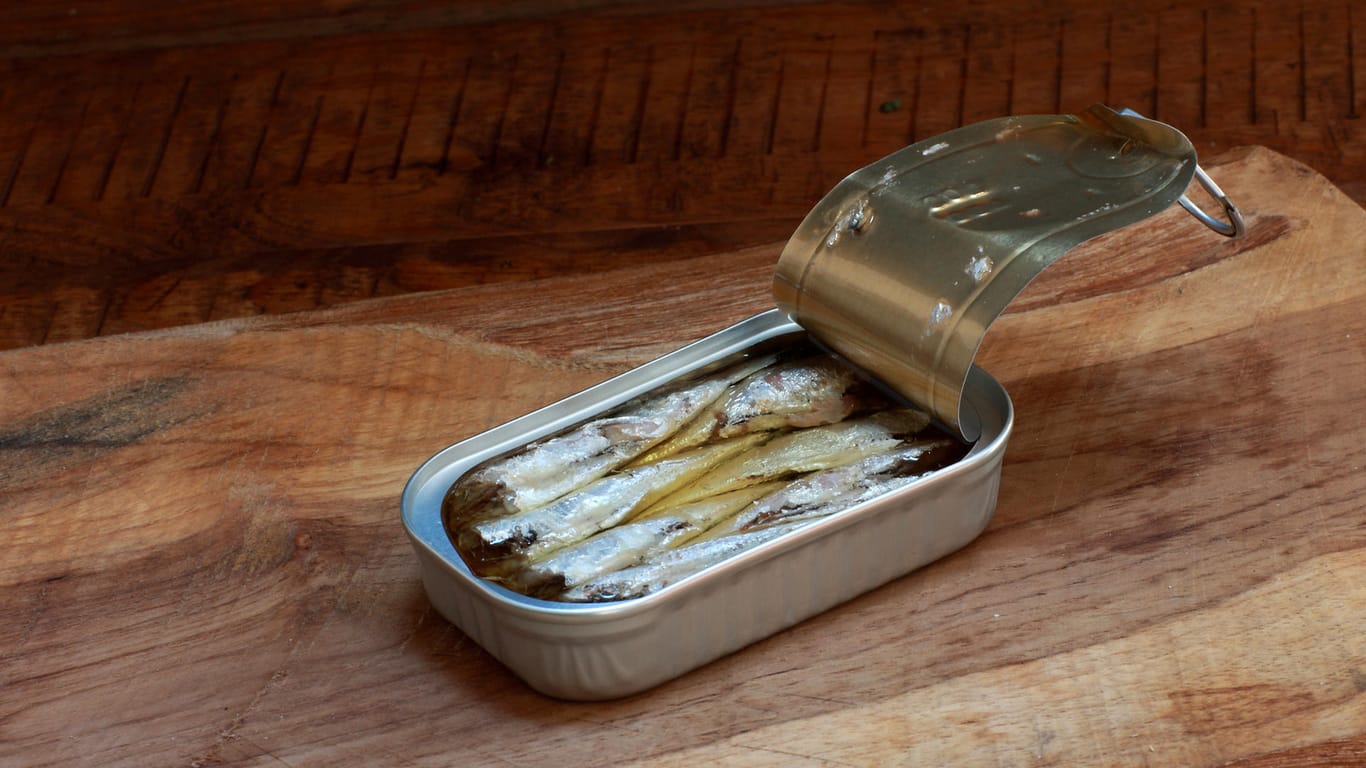 Canned fish: Is the fish affected by the canning process? (Source: SGAFotoStudio/getty-images-bilder)
Canned fish: Is the fish affected by the canning process? (Source: SGAFotoStudio/getty-images-bilder)
Fish is a healthy alternative to meat. But does this also apply to canned fish? How healthy this variant really is and what you need to consider when buying fish.
Fish is so healthy that it should be on the menu once or twice a week. According to the Federal Statistical Office, the average German eats around 13 to 14 kilograms of fish per year. Most people are a long way from having two portions of fish a week.
Is canned fish healthy?
There are almost no differences between frozen fish bought in the supermarket and fresh fish. In the case of frozen fish, the fish fillets or fish were shock-frozen immediately after being caught. Hardly any nutrients and vitamins are lost. When purchasing, you should make sure that the packaging is undamaged.
Even canned fish is healthy. Canned foods containing fatty sea fish are very good sources of omega-3 fatty acids. They are not affected by the preservation process.
This fish is suitable for losing weight
If you buy canned fish, you should still take a look at the calorie table. Fish marinated in oil or sauce usually has significantly more calories than the fresh version.
If you like to eat fish in tomato sauce, you should make sure when buying that the sauce has not been enriched with additional sugar. You can also avoid oil if you buy fish that has been marinated in its own juice.
100 grams of fish contains 20 grams of protein, which the body needs to build muscles. Nutrition experts recommend 0.8 grams of protein per kilogram of body weight per day. The fish protein is particularly easy to digest. And it’s also a filler. In this respect, lean fish such as redfish is ideal for anyone who wants to lose weight.
These nutrients in fish are good for the body
The omega-3 fatty acids contained in fish are also good for the body. The polyunsaturated fats protect against inflammation and cardiovascular diseases, they strengthen the immune system and support brain function. Types of fish such as salmon, mackerel and herring contain particularly high levels of omega-3 fatty acids.

Vitamin D is also abundant in fish. This is especially true for high-fat varieties such as mackerel, salmon, herring, tuna and sardines. Vitamin D is needed for bone growth in children and it also strengthens the immune system.
And then fish is also the most important natural source of iodine. Just two portions of sea fish per week can cover a quarter of your total weekly iodine requirement. Fish also contains the trace element selenium – like iodine, it supports the function of the thyroid gland .
How to recognize fresh fish
You can recognize fresh fish by its eyes, skin and gills. The eyes should be clear, transparent and full – i.e. not sunken. The skin should be shiny and the gills should be bright red. The freshness of a fish fillet can be recognized by the fact that the individual muscle segments do not fold apart.
If you buy packaged fish in the supermarket and want to be environmentally conscious, you should pay attention to quality seals and certificates. The Marine Stewardship Council (MSC) has a logo with a small blue fish. MSC-certified fisheries, for example, are only allowed to catch enough fish so that the fish population is not affected.
Here’s how to store fish
If you want to keep fish in the refrigerator for more than a day or two after purchasing, you should freeze it. The leaner the fish, the longer it will last. Plaice or zander, for example, can be kept frozen for up to eight months, while eel or salmon can only be stored for one to three months.
